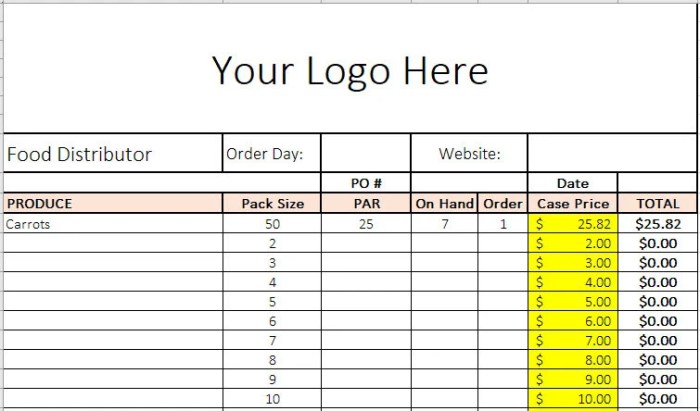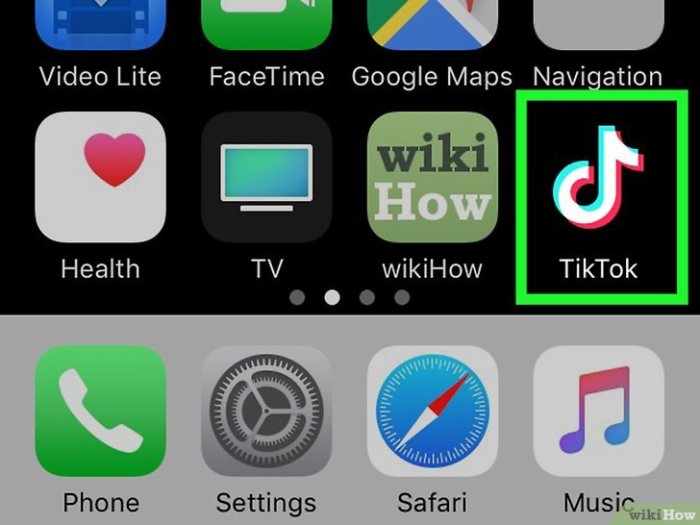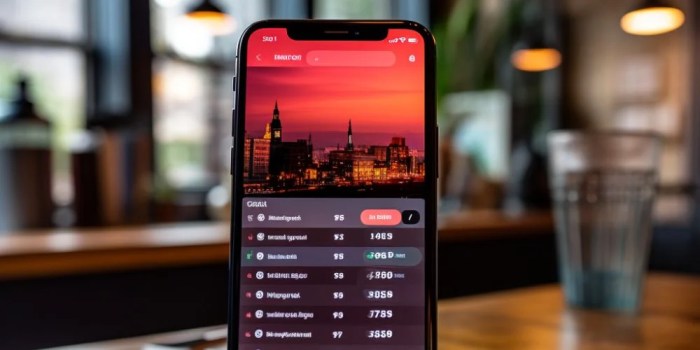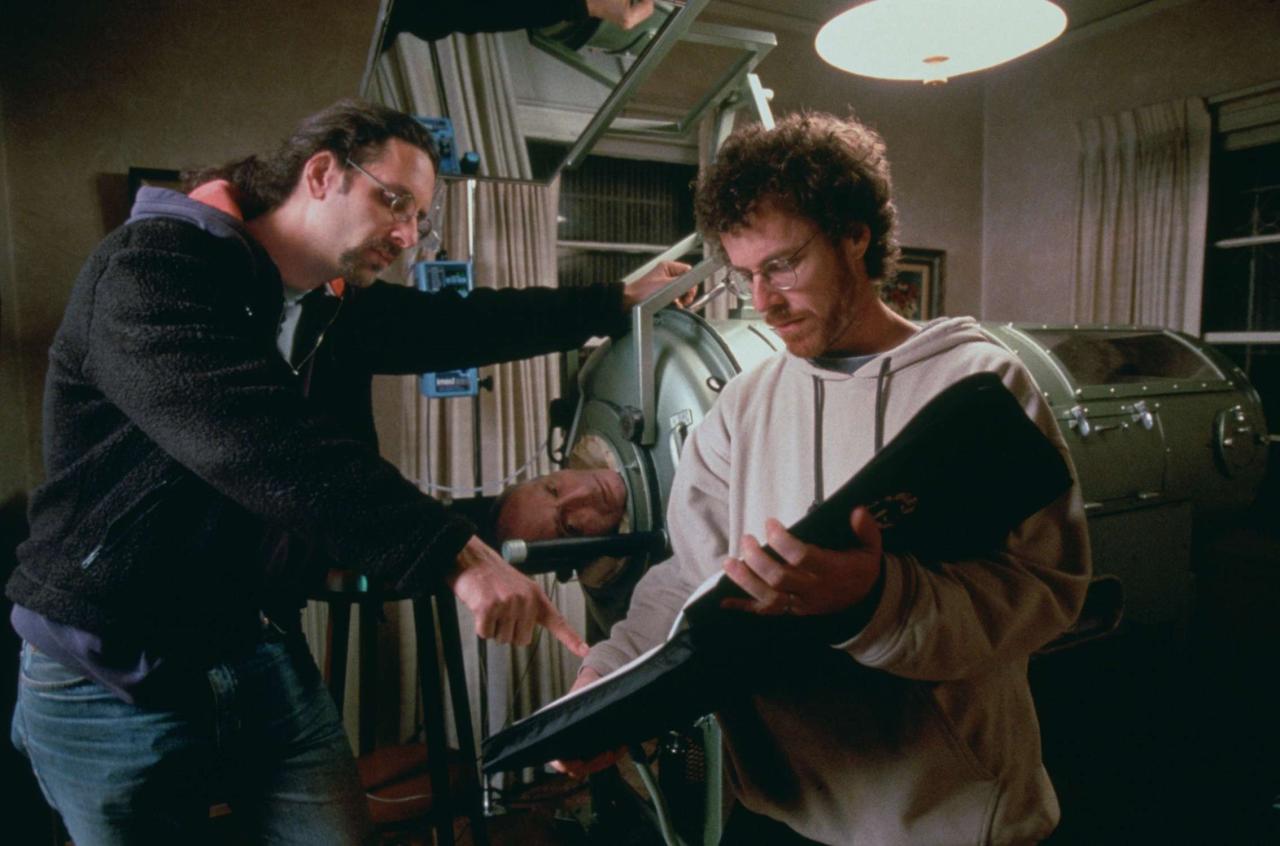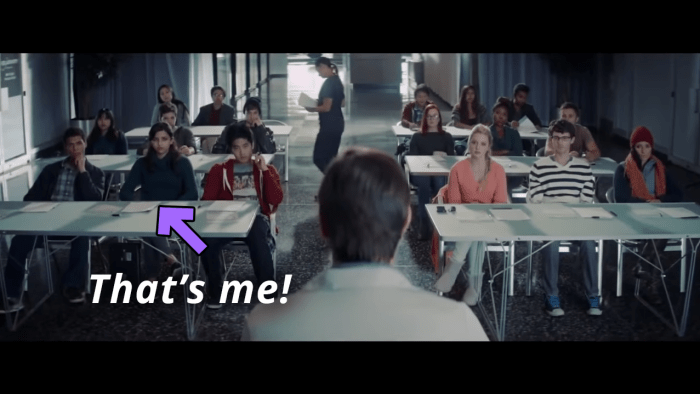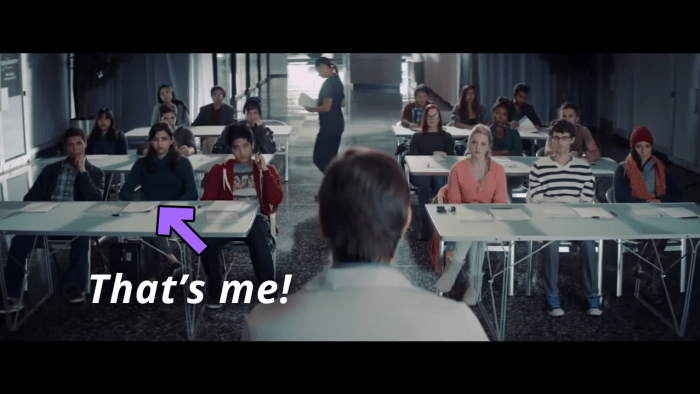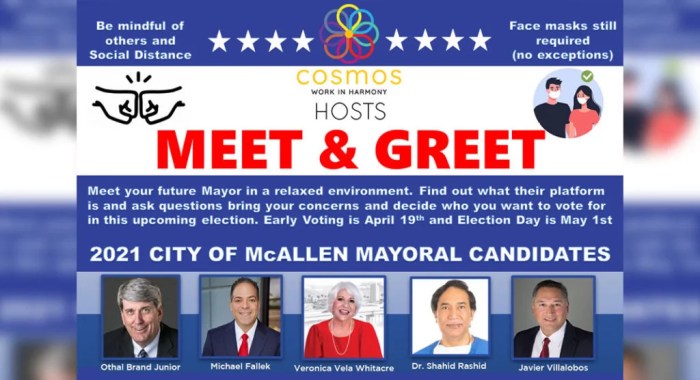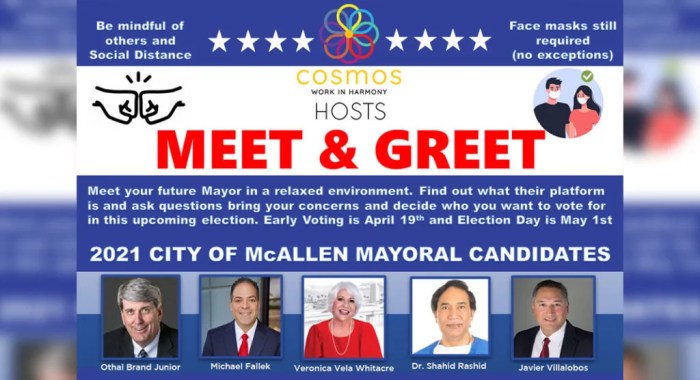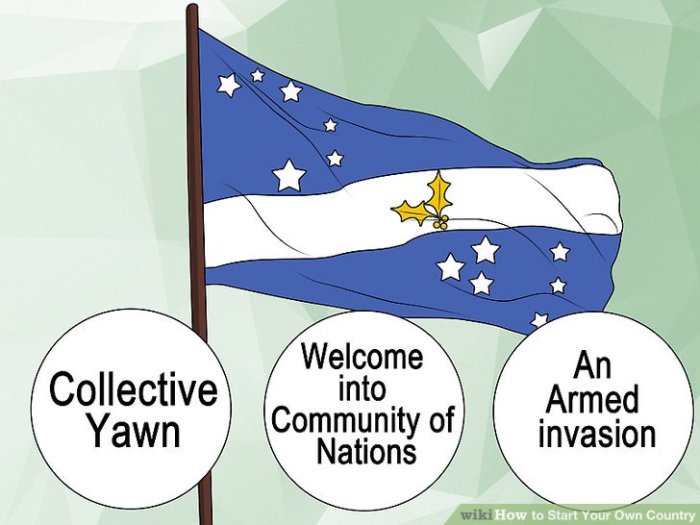Order Food to a Hotel is becoming increasingly popular, offering convenience and variety for hotel guests. This comprehensive guide explores the entire process, from browsing menus and placing orders to receiving delicious food at your doorstep. We’ll delve into various ordering methods, payment options, and customization possibilities, ensuring a smooth and satisfying experience for everyone.
We’ll look at the different ways you can order food to a hotel, from simple apps to complex websites, and compare the pros and cons of each. We’ll also examine the ordering process step-by-step, from placing the order to receiving your meal, and discuss the crucial elements of a positive customer experience.
Service Options
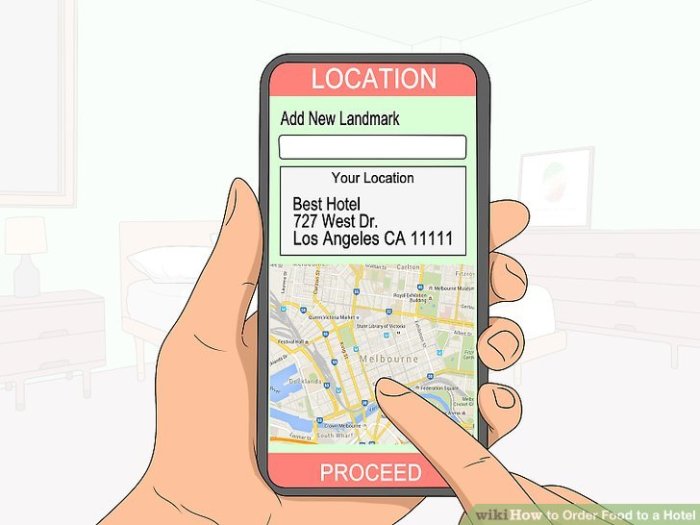
Ordering food to your hotel room has become incredibly convenient. From traditional phone calls to sophisticated online platforms, numerous options cater to various preferences and needs. This section delves into the diverse ways you can order food to your hotel, highlighting the advantages and drawbacks of each method.Ordering food to your hotel room is now a streamlined process. Whether you’re a frequent traveler, a business professional, or a leisure guest, a variety of options cater to different requirements and preferences.
Knowing the pros and cons of each method allows you to choose the best option for your specific situation.
Different Ordering Methods
Ordering food to your hotel room can be achieved through various methods, each with its own set of advantages and disadvantages. These range from traditional methods to modern digital solutions.
- Phone Calls: This traditional method allows direct interaction with hotel staff. You can discuss specific requests, allergies, or dietary needs. However, it can be less efficient, particularly during peak hours, and might not always provide real-time order tracking.
- In-Room Ordering Systems: Many hotels offer in-room tablets or digital kiosks for direct ordering. This offers convenience and allows for immediate order placement. However, not all hotels have these systems, and the options may be limited compared to online platforms.
- Online Ordering Platforms: These platforms, often integrated with hotel websites, offer extensive menus and choices. Customers can review options, track orders, and communicate with the kitchen. These platforms usually offer wider variety and greater flexibility in ordering.
- Third-Party Delivery Services: Services like Uber Eats or DoorDash may facilitate food delivery to hotels. This allows you to order from restaurants outside the hotel, offering a broader selection. However, there might be additional fees or service charges, and the delivery process might be slightly more complex.
Comparison of Ordering Platforms
Understanding the various ordering methods allows you to select the most suitable option. The following table Artikels the key features of each platform, including ease of use, costs, and availability.
| Platform | Features | Ease of Use | Cost |
|---|---|---|---|
| Phone Calls | Direct interaction with staff, potential for special requests | Moderate; depends on staff availability | Typically no additional fees |
| In-Room Ordering Systems | Direct order placement, real-time updates | High; intuitive interfaces | Usually no additional fees |
| Online Ordering Platforms | Extensive menus, order tracking, communication with kitchen | High; user-friendly interfaces | Usually no additional fees |
| Third-Party Delivery Services | Broader selection of restaurants, flexibility | Moderate; may require additional steps | Potential for delivery fees and service charges |
Ordering Process
Ordering food from a hotel involves a smooth and efficient process, designed to minimize wait times and ensure accuracy. Clear communication channels and a well-defined procedure are key to a positive experience for both the guest and the hotel staff. This section details the steps involved, from initial inquiry to final confirmation.
Typical Steps in Placing an Order
The ordering process typically involves several steps, each designed to streamline the process and minimize potential errors. From the initial request to the final confirmation, a series of interactions ensures accuracy and timely delivery. These steps are crucial to maintain a high level of service and satisfaction for the customer.
Communication Channels
Effective communication is essential throughout the entire ordering process. Various channels are employed, each with a specific purpose and time frame for use. This section Artikels the different channels utilized.
- Phone calls are often used for initial inquiries, quick updates, and resolving immediate issues.
- Online platforms are increasingly common for placing orders, especially for pre-booked events or recurring orders. This allows for a detailed order and potential adjustments before confirmation.
- Email communication can be used to confirm orders, send details on special dietary requirements, or address questions or concerns in more detail than a phone call would allow.
Confirmation and Communication Procedures, Order Food to a Hotel
Confirmation procedures are critical to ensure the accuracy of the order and prevent errors. Clear communication at each step is vital to avoid confusion and ensure the order is executed as intended.
- A detailed order confirmation is sent via email or the online platform, containing all relevant details, including the date, time, order items, and any special instructions.
- A call back or online chat feature allows for immediate clarification of any doubts or changes to the order before it’s finalized.
- A confirmation message is sent to the guest once the order has been processed and is ready for pickup.
Step-by-Step Guide to Placing an Order
This guide Artikels the steps involved in placing an order, from initiating the request to receiving confirmation.
| Step | Description | Example |
|---|---|---|
| 1. Inquiry | Initial contact with the hotel’s order department to express interest in placing an order. | Calling the hotel’s designated number or using their online ordering platform. |
| 2. Order Specification | Providing details about the desired items, quantities, special requests (dietary restrictions, allergies), and delivery/pickup details. | Requesting a specific number of steaks with a side salad and a vegetarian option for a guest, and indicating a pickup time. |
| 3. Order Confirmation | Receiving confirmation from the hotel that the order has been received and understood correctly. | A confirmation email or a call from the hotel staff confirming the order details. |
| 4. Order Processing | The hotel staff prepares the order according to the specifications provided. | The kitchen prepares the steaks and salad while the front desk arranges for the pickup. |
| 5. Order Fulfillment | The order is ready for pickup or delivery as per the customer’s request. | The order is ready for pickup at the designated time. |
| 6. Order Confirmation (Final) | Confirmation that the order has been picked up/received successfully. | The guest receives a confirmation message, either via SMS or email, confirming that the order has been received. |
Menu and Selection
Ordering food from a hotel should be a smooth and enjoyable experience, and a well-designed menu plays a crucial role. A clear and user-friendly menu is essential for customers to easily find the dishes they want. This section explores different menu presentation styles, customer browsing methods, filtering options, and effective organization strategies for hotel online menus.
Ordering food to your hotel room is a lifesaver, especially when you’re too tired to venture out. But sometimes, when you’re craving something extra special, it’s nice to discover a hidden gem like the incredible talent of amaarae the angel you don’t know amaarae the angel you dont know. Luckily, many hotels have great food delivery options, so you can still enjoy a delicious meal without leaving your room.
It’s the perfect solution for a lazy night in.
Menu Presentation Styles
Hotel menus can be presented in various formats, each with its own advantages. Some hotels use a traditional, printed menu format, while others offer digital menus displayed on tablets or interactive kiosks. A digital menu allows for dynamic updates, showcasing seasonal specials and new dishes in real-time. Interactive menus can also include high-quality images of dishes, providing a more immersive dining experience for potential customers.
Customer Browsing and Selection
Customers should be able to easily browse and select items on the menu. Clear categorization of dishes, such as appetizers, main courses, desserts, and beverages, is crucial. A simple, intuitive navigation system ensures that customers can quickly locate the desired items. Searchable menus are also beneficial, allowing customers to find specific dishes by name or . This makes it easy to locate desired dishes even within a large selection.
Filtering Options
Filtering options are important for helping customers narrow down their choices. These options could include filters based on dietary restrictions (vegetarian, vegan, gluten-free), cuisine type (Italian, Mexican, Asian), price range, or even cooking method (grilled, baked, fried). Filtering options allow customers to refine their search and quickly find dishes that meet their specific needs and preferences.
Menu Organization
A well-organized menu is essential for a smooth ordering process. The menu should be structured logically, guiding customers through the various categories. A clear hierarchy of categories (e.g., appetizers, main courses, desserts) ensures that customers can easily navigate the menu. High-quality images of dishes should be included, providing potential customers with an enticing preview. Using a consistent visual style and font throughout the menu also contributes to a professional and polished appearance.
Ordering food to a hotel can be a lifesaver, especially on busy nights. I’ve recently been planning a trip to catch Phoenix on their North American tour; phoenix line up north american tour promises some killer shows, and I’m already picturing myself enjoying a delicious pizza delivered to my hotel room after a night of amazing music.
It’s a perfect combination for a relaxing, and well-fed, getaway.
Menu Categories and Examples
| Category | Dish Examples | Price Range |
|---|---|---|
| Appetizers | Bruschetta, Spring Rolls, Caprese Salad | $5-$15 |
| Main Courses | Grilled Salmon, Chicken Alfredo, Vegetarian Pasta | $15-$30 |
| Desserts | Chocolate Lava Cake, Crème Brûlée, Apple Pie | $8-$15 |
| Beverages | Coffee, Tea, Soft Drinks, Cocktails | $3-$10 |
Effective Online Menu Design
A hotel’s online menu should be organized effectively to maximize user experience. Consider using a clean and uncluttered layout, with clear headings and subheadings. High-quality images of dishes are essential to entice customers and showcase the food’s visual appeal. The menu should be responsive, adapting to different screen sizes and devices (desktops, tablets, smartphones) for a seamless experience.
The site should also be optimized for speed, ensuring quick loading times.
Payment and Delivery
Ordering food from your hotel should be a seamless experience, and this section details the various payment and delivery methods to make it so. From secure payment options to transparent delivery fees and procedures, we’ve covered all the bases to ensure a smooth transaction.
Accepted Payment Methods
This section Artikels the accepted payment methods for your convenience. We prioritize secure and reliable payment options to protect your financial information.
- Credit Cards (Visa, Mastercard, American Express): We accept major credit cards for your added convenience and security.
- Debit Cards (Visa, Mastercard): Using your debit card is a quick and secure way to complete your order.
- Hotel Account: For frequent guests, using your hotel account for payment is a convenient option.
- Mobile Payments (Apple Pay, Google Pay): We support popular mobile payment platforms for a streamlined ordering process.
Payment Security
Ensuring the security of your financial information is paramount. Our payment gateway employs advanced encryption technologies to protect your sensitive data.
We use industry-standard encryption protocols to safeguard your payment information. This includes SSL encryption, which protects data transmitted between your device and our servers.
Delivery Options and Fees
Various delivery options are available to meet your needs. The fees associated with each option are clearly Artikeld below.
| Delivery Method | Estimated Delivery Time | Delivery Fee |
|---|---|---|
| Standard Delivery | 1-2 hours | $5.00 |
| Express Delivery | 30-60 minutes | $10.00 |
| Same-Day Delivery (within a 5-mile radius of the hotel) | 60 minutes or less | $15.00 |
Comparison of Delivery Methods
The table above highlights the trade-offs between speed and cost. Express delivery offers a faster option for immediate needs, while standard delivery provides a more affordable option for customers who can wait a bit longer.
Role of Delivery Personnel
Our delivery personnel are trained to handle orders professionally and efficiently. They are expected to maintain a high standard of service, and to respect the hotel environment.
- Professionalism: Delivery personnel are trained to be courteous and respectful of hotel guests and staff.
- Accuracy: They are instructed to confirm the order details with the customer before delivery to avoid errors.
- Timeliness: Delivery personnel are expected to adhere to the estimated delivery times, prioritizing prompt service.
Order Modifications or Cancellations
We understand that circumstances can change. Our policy for modifying or canceling orders is Artikeld below.
- Modifications: Modifications can be made up to 30 minutes before the estimated delivery time, subject to availability.
- Cancellations: Cancellations can be requested up to 30 minutes before the estimated delivery time, avoiding any unnecessary charges or inconvenience.
Customer Experience: Order Food To A Hotel
Ordering food from a hotel should be a positive and stress-free experience for the customer. A well-designed system, coupled with excellent service, can transform a simple order into a memorable interaction. This section explores the critical aspects of customer experience, highlighting key elements, common pain points, and strategies for improvement.
Importance of a Seamless Customer Experience
A seamless customer experience in a hotel food ordering system is crucial for customer satisfaction and loyalty. Positive experiences lead to repeat business and positive word-of-mouth referrals. Conversely, negative experiences can result in lost customers and damage the hotel’s reputation. A smooth ordering process, from initial browsing to final delivery, fosters trust and confidence in the hotel’s service.
Key Elements Contributing to a Positive Experience
Several factors contribute to a positive customer experience. These include a user-friendly ordering platform, clear and concise menu descriptions, accurate and timely order fulfillment, and professional and helpful staff. Prompt responses to inquiries and efficient order handling significantly impact the overall customer perception.
Common Customer Pain Points in the Ordering Process
Several pain points can disrupt the customer experience. Inconsistent order processing, confusing menu descriptions, and lengthy wait times are common sources of frustration. Poor communication during the ordering process and inaccurate delivery information can also negatively affect the customer journey. Furthermore, the absence of clear order tracking can lead to anxiety and uncertainty.
Examples of Excellent Customer Service Interactions
Excellent customer service interactions go beyond simply fulfilling an order. For instance, a staff member who proactively addresses potential issues before they arise demonstrates exceptional service. Offering personalized recommendations or resolving complaints with empathy can significantly enhance the customer experience. A quick and efficient response to a customer query, even if it’s a simple one, leaves a lasting positive impression.
A hotel that proactively addresses customer feedback, acting on suggestions and complaints, builds stronger relationships with its patrons.
Role of Staff in Enhancing the Customer Journey
Hotel staff play a critical role in the customer journey. Friendly and helpful staff members who are knowledgeable about the menu and ordering process can create a positive atmosphere. Training staff to handle customer inquiries effectively, provide clear instructions, and anticipate customer needs is essential. A welcoming attitude and a proactive approach to customer service contribute significantly to the overall experience.
Importance of Timely Order Fulfillment
Timely order fulfillment is critical for a positive customer experience. Consistent delays in delivery can lead to significant frustration and negatively impact customer satisfaction. A reliable system for order tracking and communication with customers about order status is essential to manage expectations. Maintaining accurate order fulfillment times and providing updates during the process builds trust and confidence.
Ordering food to your hotel room is super convenient, but sometimes you might need to make some lifestyle adjustments. For example, if you’re trying to quit smoking and drinking at the same time, Stop Smoking and Drinking at the Same Time can be a helpful resource. Having that delicious meal delivered to your room can be a fantastic treat, even when you’re focusing on better health habits.
It’s all about balance, right?
Customization Options
Ordering food from a hotel should be a personalized experience. This allows for a tailored meal that fits individual needs and preferences. This section details the various customization options available, focusing on special dietary requirements and providing a clear process for handling requests.
Customization Possibilities
Hotels offer a wide range of customization options to cater to diverse needs and preferences. From dietary restrictions to specific ingredient substitutions, customers can tailor their orders to meet their individual requirements. This includes adjusting portion sizes, selecting specific cooking methods, or requesting substitutions for certain ingredients.
Special Dietary Requests
Many individuals have specific dietary needs, and hotels are increasingly accommodating these requirements. This could include vegetarian, vegan, gluten-free, dairy-free, or other allergies. Accurate and prompt communication regarding these requests is paramount to ensure the safety and satisfaction of the customer.
Examples of Customization Requests
Customers might request a vegetarian meal that omits certain vegetables or specific condiments. They might request a gluten-free alternative to bread, or a dish prepared without dairy products. Other requests might involve adjusting portion sizes or using specific cooking methods. These are just a few examples, highlighting the potential for tailored meal customization.
Procedure for Handling Special Requests
A clear procedure is essential for handling special requests effectively. This involves a well-defined communication channel, such as a dedicated phone line or online form, where customers can specify their requirements. The hotel’s staff will then verify the request, confirm its feasibility, and ensure proper communication with the kitchen staff. This process ensures that the order meets the customer’s specifications while maintaining safety and quality standards.
Customization Request Table
| Request Type | Example | Process |
|---|---|---|
| Dietary Restriction | Gluten-free pasta with a side salad | Customer specifies gluten-free pasta and requests to avoid cross-contamination during preparation. Kitchen confirms ingredients and preparation method to avoid gluten. |
| Ingredient Substitution | Grilled chicken breast instead of fish | Customer specifies chicken breast instead of fish. Kitchen confirms availability and substitutes the ingredient accordingly. |
| Portion Size | Half portion of a dish | Customer requests half the usual portion. Kitchen adjusts the serving size accordingly. |
| Cooking Method | Steamed vegetables instead of fried | Customer requests steamed vegetables instead of fried. Kitchen prepares the vegetables using the specified method. |
| Allergy | Avoid peanuts in a dish | Customer specifies to avoid peanuts. Kitchen confirms all ingredients and preparation methods to avoid peanut contamination. |
Technology Integration
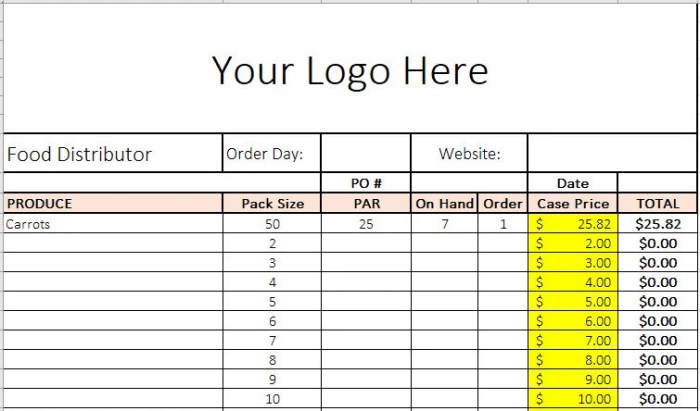
The modern hospitality industry relies heavily on technology to streamline operations and enhance the guest experience. This is especially true for online ordering systems, where efficiency and seamless integration are crucial for success. From order placement to delivery, technology plays a vital role in optimizing every step of the process.Technology integration in our hotel’s order system empowers us to provide a faster, more convenient, and ultimately, more satisfying experience for our guests.
This approach not only improves operational efficiency but also fosters customer loyalty and strengthens our brand image.
Mobile Ordering Applications
Mobile applications provide a convenient and user-friendly platform for guests to browse menus, place orders, and track their orders in real-time. This technology facilitates a more personalized and interactive experience, allowing guests to customize their orders according to their preferences. Guests can easily access menus, view dietary restrictions, and add notes directly to their orders.
Online Ordering Platforms
Online platforms serve as a central hub for managing orders, streamlining communication between the kitchen and delivery staff, and providing real-time updates to guests. This central system allows for seamless integration with existing hotel management systems, facilitating data flow and minimizing errors. The platform acts as a crucial communication bridge between the various stakeholders in the ordering process.
Enhancements to the Customer Experience
Technology offers several advantages in enhancing the customer experience. Real-time order tracking allows guests to monitor the progress of their food from preparation to delivery, fostering transparency and anticipation. Personalized recommendations based on past orders or preferences further enhance the experience by tailoring the ordering process to individual needs. For example, a guest who frequently orders a specific dish might receive a notification about special promotions or limited-time offers on that item.
Impact on Customer Service
Technology significantly impacts customer service by providing tools for efficient order management and prompt response to queries. Automated responses to common questions, such as order status updates, can free up customer service representatives to address more complex issues. Advanced analytics and reporting features provide valuable insights into customer preferences, allowing for targeted improvements in the ordering process and customer service interactions.
Final Thoughts
In conclusion, ordering food to a hotel is more than just a service; it’s a gateway to culinary exploration and convenience. This guide has provided a thorough overview of the entire process, highlighting the importance of seamless communication, efficient platforms, and a customer-centric approach. From diverse menu options to personalized customization, the future of hotel dining is now at your fingertips.
